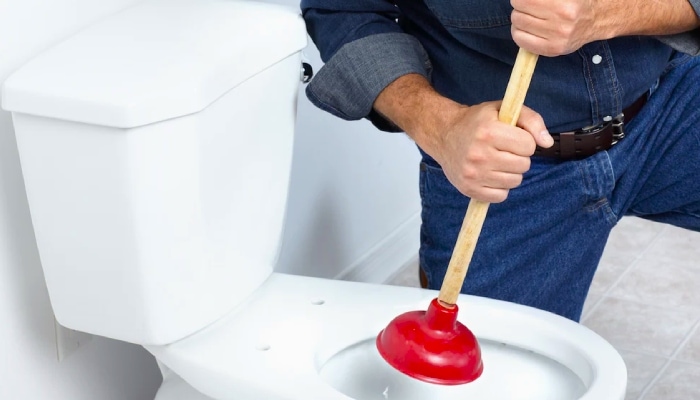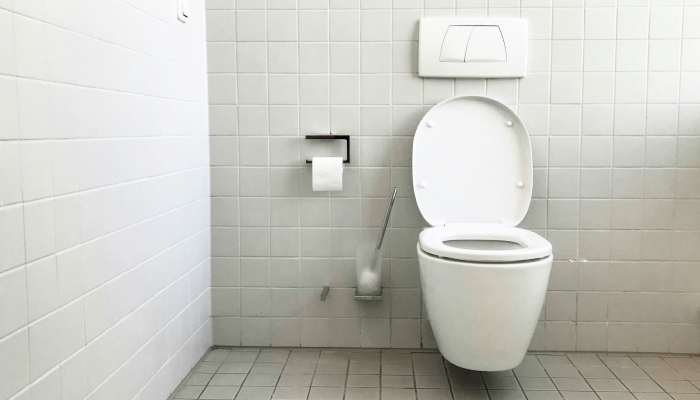Toilet clogs are a universal nuisance, disrupting daily routines and posing sanitary concerns in households worldwide. The quest for effective solutions to this age-old problem has spurred innovations within the plumbing industry that blend technology, environmental sustainability, and user-friendliness. This article delves into the evolution of toilet unclogging solutions, highlighting contemporary advancements in plumbing services and peering into the innovations and future trends in toilet unclogging solutions.
As we navigate through traditional methods to cutting-edge technologies, including smart plumbing and the latest trends in plumbing technology, we underscore the significance of adopting solutions that not only resolve immediate clogs, including the persistent issue of a clogged toilet, but also pave the way for smarter, greener, and more efficient toilet maintenance practices. The integration of smart plumbing technology and services into the plumbing industry represents a leap forward in managing clogged toilets more effectively, reflecting a broader shift towards leveraging the latest trends and technologies to enhance the efficacy and sustainability of plumbing solutions. This approach to tackling the common problem of a clogged toilet exemplifies the industry’s commitment to innovation, ensuring that households can rely on more advanced, environmentally friendly, and efficient methods for maintaining their plumbing systems.

Historical Overview of Toilet Unclogging Techniques
The battle against leaks drains and toilet clogs is as old as the invention of modern plumbing systems, including the network of pipes connected to washing machines, water heaters, and sinks. Traditionally, the arsenal against such service disruptions included manual and chemical tools, each with its merits and demerits.
Manual Tools: The plunger stands out as the plumbers’ first service’s most iconic tool, a symbol of immediate action against clogs. Its simple design a rubber cup attached to a wooden handle has remained relatively unchanged over the years, a testament to its effectiveness. Plumbers’ snakes, or drain augers, offer a more invasive solution, reaching deeper into pipes to dislodge blockages beyond the reach of plungers. Plumbing service companies have long relied on these tools, often enhancing their effectiveness with cutting-edge technology to navigate the complexities of modern plumbing systems.
Chemical Uncloggers: Chemical drain cleaners introduced a less labor-intensive method for clearing clogged toilets, promising to dissolve clogs with potent formulations, including a variety of chemicals specifically designed to unclog toilets. While effective for minor blockages, their environmental impact and potential to damage plumbing over time have raised concerns. The use of these chemicals to unclog toilets has become a common practice, but it’s one that requires careful consideration due to the potential repercussions. These concerns have become even more pronounced with the advent of tankless water heaters and sophisticated washing machines, which demand more from plumbing systems. The interaction between these high-efficiency appliances and the harsh chemicals found in some drain cleaners can exacerbate the risk of damage to plumbing components, underscoring the need for safer, more sustainable solutions.
Despite their effectiveness, these traditional unclogging methods often fall short in the face of modern plumbing complexities, such as those introduced by high-efficiency appliances and advanced water heating systems. Environmental sustainability of water supply has also become a critical consideration, prompting a shift towards solutions that minimize ecological footprints. Rubber gloves, once merely a tool for hygiene during unclogging tasks, have become a symbol of the hands-on effort to protect our water systems from harmful chemicals.
The limitations of traditional unclogging techniques have set the stage for innovations that address these challenges, marking a significant evolution in how we manage and maintain our plumbing systems. From the rubber cup of the plunger to the sophisticated sensors in tankless water heaters, the journey of unclogging technologies reflects a broader narrative of progress, sustainability, and the relentless pursuit of better solutions for our homes.

Current Innovations in Toilet Unclogging
In recent years, the development of toilet unclogging solutions has seen remarkable innovations, driven by advancements in technology and a growing industry emphasis on sustainability. These modern solutions not only aim to clear blockages more efficiently but also to do so in an environmentally friendly manner.
High-Pressure Air Blasters: One of the most notable advancements is the introduction of high-pressure air blasters. These devices use the power of compressed air to generate a powerful blast hot water that clears blockages without the need for chemicals or manual labor. Unlike traditional plungers, air blasters offer a mess-free solution that is both effective and easy to use.
Eco-Friendly Enzymatic Cleaners: Moving away from harsh chemical cleaners, the market has seen a rise in eco-friendly enzymatic cleaners. These solutions use natural bacteria and enzymes to break down organic matter in clogs, such as hair and grease, without damaging pipes or harming the environment. They represent a shift towards more sustainable maintenance and hygiene practices, appealing to environmentally conscious consumers.
Smart Technology Integration: The incorporation of smart technology into toilets, bathrooms and showers marks a significant leap forward. Modern smart toilets and showers are equipped with sensors and automatic adjusters that prevent clogs before they happen. These toilets can detect potential blockages and adjust the water flow accordingly, reducing the likelihood of clogs and the need for manual unclogging.
Case Studies: Several case studies highlight key trends in the success of these innovations. For the plumbing industry for instance, a residential complex that switched to high-pressure air blasters reported a significant reduction in maintenance calls related to toilet clogs. Similarly, a hotel chain that adopted eco-friendly enzymatic floor cleaners saw not only a decrease in plumbing issues but also an improvement in their environmental impact ratings.

Environmental Considerations and Sustainability
As the global community becomes increasingly aware of environmental issues, the demand for sustainable solutions in every aspect of daily life has grown, including toilet unclogging methods. Traditional chemical cleaners and excessive water use are no longer acceptable for eco-conscious consumers, prompting a shift towards more environmentally friendly approaches.
Impact of Traditional Methods: Chemical drain cleaners, though effective for clearing clogs from drains, contain harsh substances that can contaminate water sources and harm aquatic life. Furthermore, these chemicals can corrode plumbing over time, leading to leaks and necessitating resource-intensive repairs or replacements of the plumbing fixtures.
Sustainable Innovations: In response, the market has seen the introduction of biodegradable and eco-friendly products that minimize environmental impact. Enzymatic cleaners, for example, use naturally occurring bacteria and enzymes to digest organic matter, turning clogs into harmless substances that can be easily flushed away. These products offer an effective solution without the environmental drawbacks associated with chemical cleaners.
Reducing Water Usage: Another critical aspect of sustainability in toilet unclogging is water conservation. Innovative toilet designs include dual-flush mechanisms and low-flow systems and fixtures that significantly reduce water usage without compromising on performance. These features not only help in preventing clogs by maintaining adequate pressure but also contribute to the broader goal of water conservation.
Future Directions: Looking forward, the development of new materials and coatings for toilet bowls and pipes that prevent waste buildup could further reduce the need for unclogging, thereby saving water and reducing the reliance on chemical or mechanical bowl unclogging methods.

Consumer Guidance: Choosing the Right Solution
Navigating the array of toilet unclogging solutions available today can be daunting for consumers. With the advent of innovative technologies and a growing emphasis on sustainability, making an informed bathroom choice requires consideration of several factors.
Assessing Needs: The first step in selecting the right unclogging solution is to assess the specific needs of your household. Factors such as water level the frequency of clogs, types of waste that commonly cause blockages, and the existing plumbing system can influence which solution will be most effective.
Eco-Friendly Options: For environmentally conscious consumers, eco-friendly enzymatic cleaners and low-flow toilets represent a significant step forward. These options not only address clogs effectively but also align bathroom using with a sustainable lifestyle. It’s important for homeowners to research products and read reviews to ensure that their performance matches their eco-friendly promises.
Smart Technology Solutions: Households looking to integrate smart home technology should consider toilets with built-in sensors and connectivity features. While these various accessories and fixtures may represent a higher initial investment, the convenience and efficiency they offer can be well worth the cost. Compatibility with existing smart home systems and ease of use are key considerations.
Professional Consultation: In cases of severe or recurring clogs, consulting with a professional plumber can provide insights into the underlying issues of clog and the most effective long-term solutions. This may include upgrading to a modern toilet designed to prevent clogs or retrofitting existing systems with newer technologies safety features.
Conclusion
The transition from traditional methods to smart, eco-friendly unclogging solutions showcases major progress in toilet maintenance, driven by technological advancements within the plumbing industry. Plumbing companies and services are at the forefront, integrating plumbing technology and innovations such as biotechnology, AI, and new materials. These advances not only enhance efficiency but also align with sustainability and smart home trends, reflecting the plumbing industry’s response to consumer demands for more effective, environmentally friendly solutions.
With the ongoing technological advancements, the future promises even greater improvements, potentially relegating toilet clogs to the past. Consumers play a pivotal role in this evolution, with their preferences and adoption of new technologies steering the industry towards a future of simpler, more sustainable toilet maintenance. This journey highlights our collective ingenuity and commitment to advancing plumbing services and technology for a cleaner, more efficient world.



